What’s my Role as the CTO? The Three Pillars of Executive Work
“What is my role as CTO?” is one of the most common questions I discuss with my clients. If they don’t bring it up on their own, it’s the first question I bring up. On the surface, this should be easy to answer, right? Technology, code, features, product, and other hand-waving gestures using fuzzy terms that aren’t helpful. The reality is that most people we work with don’t have a clear picture of what their role is, what responsibilities are tied to it, and what they contribute to the business as a whole.

As a company moves from its earliest stages, to a growing business supported by investors and plenty of paying customers, hiring people left and right, there’s a shift for all of the founders. It can be unsettling to have been the person who built the first version of the product and suddenly bump into people left and right as you’re continuing to work how you used to. Touching code is still a lot of fun, but somehow there’s never enough time in the calendar. People rely on you heavily for your input and your contributions. You still carry a lot of knowledge and are constantly being pulled in for code reviews, infrastructure work, and to give input on technical decisions. And heck, all that’s fun! It’s what gives you energy, it’s what got you to this point. Congratulations, you’ve become a blocker.
It can be incredibly difficult to let go of all of that. There’s joy in helping your teams move forward, still feeling involved, in feeling needed. Plus, there’s instant clarity in what needs to get done next. There’s a ticket here, a broken test there, new documentation over here. It’s a fluid motion, helping the team and the product to progress in small but consistent steps.
You’re stuck in the weeds, getting pulled into every single discussion and decision. You’re busy with code, or you’re the first responder to production outages. With this busyness, it’s difficult to stick your head up and look around, asking yourself whether what you’re doing is really the right thing in this moment.
The real trouble is not knowing what the alternative could be. It’s easy to tell someone that they should stop writing code and instead focus on direction, strategy, or people, or all of the above. But that provides a pretty opaque view of where they’re moving towards. It’s clear what they’re leaving behind, but the lack of a tangible alternative makes it more likely they’ll resort to the work they know how to do, the work that gives them a feeling of progress and a sense of purpose.
The Three Pillars of any Executive Role
There’s no one clear definition of the role of a CTO, no clear set of responsibilities that apply to every single person in a CTO role. No matter where you land, there’s a set of pillars that’s common to every executive role:
- Contributing business value. For an engineering leader, this isn’t necessarily about shipping new features, about shipping code, or bringing stability. Sure, this is what your organization should be doing on a daily basis. But what matters is that all of them happen for the right reasons and with the right goal in mind. Ultimately, what your team ships into production serves the customer and needs to contribute to the bottom line.
- Setting the direction. There’s a clear view of where your organization needs to move in support of the larger business goals. This can involve technology choices, different ways of working, how you grow and structure the team,
- Holding the culture. You set the team’s values and behaviors. You hold them, live them, and keep everyone accountable to do the same. No matter what the culture is you want to see in your team, it starts with you living it to the fullest. You hire the right people to live these behaviors, and you do everything you can to nurture a great environment so that they’re inclined to stay.
Now, not all these things need to fall on your shoulders alone. You can delegate them to other folks in the organization. But, ultimately, you’re responsible. Upwards, to the CEO and the Board, as well as your executive peers, these are on you to create and maintain.
There’s a subtle beauty in these three pillars. You can swap out engineering with other parts of the organization and apply them to most senior leadership and executive roles. There’s always an element of these present no matter where that role sits.
I’ve found these three pillars helpful in grounding our clients when we talk about their role. They provide a high level picture of the role that provides a good level of clarity and guidance in prioritizing your own work. Does whatever they want to do fit into these buckets? If it doesn’t, it should probably be someone else’s responsibility.
But on its own, it doesn’t provide enough guidance to determine what you do as the CTO. This really comes down to a mix of two questions:
- What does the business need from you?
- What do you want to do?
Let’s break them down.
What does the business need from you?
This is such an innocent-looking question, isn’t it? Obviously, the business needs you and your team to ship more code, new features, fix bugs, make sure everything’s up and running. But hold on there, is that really what it needs?
Maybe an early stage startup needs exactly that. There’s nothing more important than getting everything in place to get those first customers signed up. Once you grow, and you hire more people, that quickly changes. The business might need you to look further ahead into the future, leaving the details to other people. It might need you to talk to investors, to customers, to be more strategic in your work. It might need you to instate processes, values, culture, everything that’s helping your team scale around you. It might need you to hand the reins to someone more experienced and take on a different role. It might need you to create a product roadmap for the next three months and beyond. It might need you to create a hiring plan for the next year. It might need you to go speak at conferences and represent the company, helping attract future employees and customers. The list goes on and on.
Most of these things aren’t permanent activities. Some of them are recurring, others only need to happen once, starting anew only when the need arises, for example when the team outgrows a process.
While this conversation starts with us and our clients, it also involves their co-founders and other folks in the company that rely on the CTO and their team. Only that way can you understand the needs of the business outside of what you and your team might think. It may very well be that others also share the view that your team should simply focus on shipping new features, but what exactly those are and what goal they try to achieve should still be a part of that conversation. Identifying what the business’s and your peers’s goals are is one of the best outcomes you can hope for. You can then figure out how your team can help achieve those and set their goals, direction, processes, or hiring priorities, accordingly.
Most importantly, you can tune your role to these needs, or hire or pick a person to delegate these responsibilities.
What do you want to do?
It’s easy to forget that you still have a choice in what you want to do with the role of the CTO. While you need to grow with it to be able to take the company where it needs to go, you still have a choice on what you want to focus on.
Some CTOs still want to stay connected with the code base, or the product as a whole. Others may want to dive deeper into management or focus solely on hiring a great team. Or you want to build the product’s next iteration, keep abreast of technology trends, or just stay off meetings altogether and work alongside your team, knee-deep in code.
Ideally, there’s a good overlap between what you want to do with what the business needs. If there isn’t, though, you can still choose to hire someone to focus on what the business needs. Say the business needs your team to grow from twenty to a hundred people within a year. In that case, you still writing code every day is at complete odds with what the business needs you to do.
But what’s important is that you still get to have a say in what your role and its responsibilities should be.
What exactly those different responsibilities are is the topic of our next post in this series.
Reflections
Reflect: What areas are you still deeply involved in your everyday work that feel good as you’re working through them? Talk to the folks closest to you about where you may be too deeply involved and created blockages for your team. Considering the three pillars of executive work, where are you on each in terms of your daily work? What areas are you not yet fully living up to and why?
Assess: Think about what the business needs from you over the next six months. Do you need to grow the team, or even shrink it? Is the company going to fundraise? Approach your peers from other departments to learn what their next six months look like. Ask them what their priorities are and how you can best support them. For instance, if your marketing team is doing a big push to increase the product’s visibility, your own focus may need to move to supporting this rather than the big engineering initiatives your team has been pushing for.
Do: What would you need to put in place to prepare for these events while still feeling in control of your role? What do you need to let go of to live up to your and others’s expectations towards the role? What would need to happen for you to be most comfortable letting go? What can you start doing tomorrow that would shift you more towards the three pillars?
Read our newsletter
Sign up to receive our journal updates and to get previews of our book.

